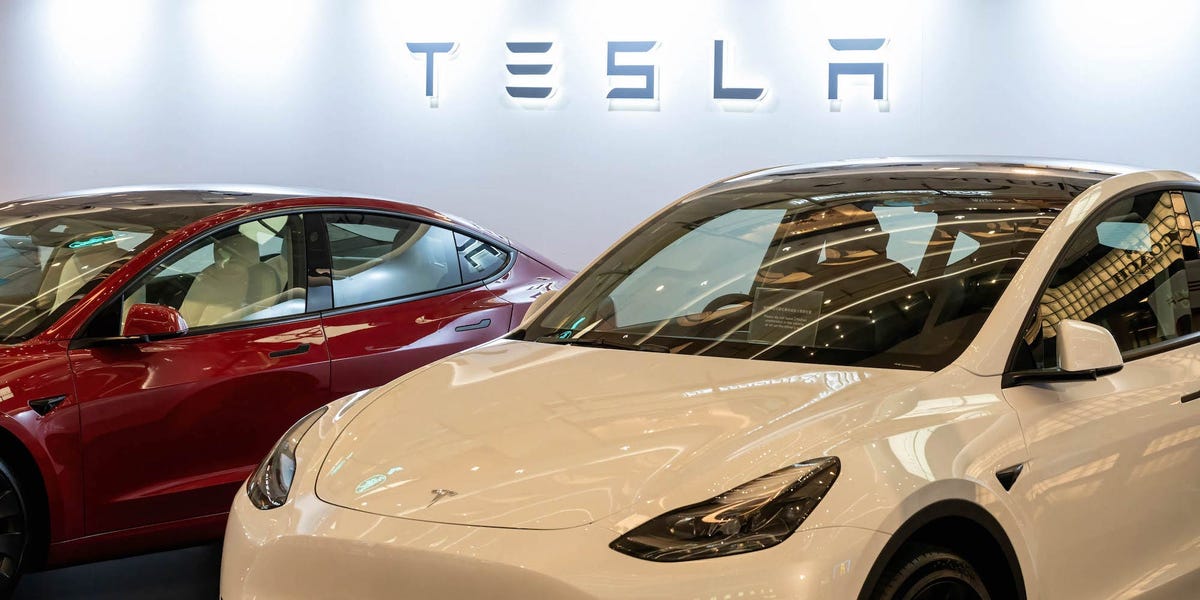Tesla was so swamped with complaints about driving ranges that it created a secret team to cancel owners’ service appointments, source says::To suppress the volume of complaints the automaker created a secret “Diversion Team” in Las Vegas to cancel appointments, Reuters reported.



I concur, this is also my experience. The car GPS has never directed us to travel further than the charge allows–and it will include stops at superchargers on the way as necessary. It’s really not that big an issue.
But, the range that it presents you in the UI is not the actual range that you can travel. The fact that the car won’t plan out a route for a location 300 miles away when it claims you can travel 320, but will instead include a stop at a supercharger at around 200, kinda proves they know this.
I think the projected range is basically the platonic ideal if you were traveling in a perfectly flat landscape, with no wind, with an external temperature of 18.2°C, traveling at 37.25 miles per hour or whatever. Every deviation from that ideal will hurt your range. In my experience, I tend to get probably 250-ish miles on a 320 mile charge, depending on the time of year.
Gas vehicles tend, on the other hand, to undersell the range in my experience, and people are used to going further than the car says they can.
The problem is that other vehicles adjust the projection based on current conditions - when I drive up a mountain, my projected range drops like a rock. When I drive back down I can end up with more range than I started. Reporting the “ideal” case during operation is misleading at best.
Yeah, it seems like using ‘miles’ as an indicator or energy left is the root cause. If they just change the kwh left or similar they’d be more accurate but, ironically, confuse way more people.
Though, ironically a scale of Full - 3/4 - half - 1/4 - empty is perfectly fine for gas. There is usually a visual gauge of % for charge, but it isn’t as prominent as the range. Oddly, my car has it divided roughly in thirds.
It’s also less accurate. Ever notice your phone sometimes drops from 100% to 80% in only a few minutes, or hangs around at 10% for ages? That’s because with batteries it’s much less simple than “full, medium, empty”. There’s actually a bunch of code to improve the estimation specifically for your battery, and still they can behave strangely.
How would anyone actually use that information?
That’s part of my point. kWh isn’t very useful to most people. The problem is that ‘miles left’ is an abstraction from kWh which is more helpful but less accurate.
Now people are complaining that it’s not accurate, which it was never going to be in the first place. It’s a UX problem. They should probably just change to a percentage based readout with a “Estimated Miles Remaining” option for those that want it.
I found some images of a Tesla’s display, and it has a percentage and a bar graph just like a phone. The problem isn’t that people can’t see roughly how much charge is left, it’s that the distance-remaining display is misleading to such a degree that it seems malicious, and it’s demonstrably possible to give a much more accurate estimate. They are at the very least guilty of including a defective feature in their cars.
Same as a fuel guage I’d imagine.
I’ve never seen a fuel gauge marked in any kind of units like liters or gallons, just fractions of a full tank.
Tanks is a unit of volume…
How many liters are there in a tank?
Implementation defined.
But like kWh you can easily learn (either intuitively or by the dark magic of multiplication) the ratio between tanks and ability to get to your destination.
The idea that people can’t learn that they get roughly 6 or roughly 3 etc km per kWh with their driving style and thus physical units should be hidden from them is insulting and anti-intellectual. Stop trying to project your stupidity and anti-curiosity onto others.
You can display percent instead of rated miles
That’s a 28% exaggeration in economy.
You’re putting a certain amount of electricity into that car, and you are being told that amount of electricity is good for 320 miles. You’re only getting 250 miles from that. Everyone else is only getting 250 miles from that. The only people supposedly getting 320 miles of range from that charge are the salespeople convincing you to buy it. Misrepresentation of the distance you can travel on a battery is no different than misrepresentation of the distance you can travel on a tank. You’re just multiplying the MPG by the size of the tank, or the kWh/mile by the battery capacity.
Suppose I buy a sedan with a rating of 32mpg. But I’m only getting 25mpg. I put 10 gallons in the 10-gallon tank, expecting to drive 320 miles, but I have to stop and put another 10 gallons in after 250 miles.
Everyone else who bought the same sedan is getting 25mpg. Meanwhile, my other car, an SUV from a different manufacturer, is also rated 32mpg, and actually gets 32mpg. Everyone else who bought that SUV is reporting pretty damn close to 32mpg.
Clearly, the manufacturer of this sedan is pulling something shady. It doesn’t become less shady when the sedan is burning gallons of diesel instead of gallons of gasoline. Or gallons of propane instead of gas or diesel. Or cubic feet of natural gas or hydrogen instead of a liquid fuel. Or pounds of steam instead of a combustible fuel. It doesn’t become less shady when the sedan is consuming kWh of electricity instead of a mass or volume of a physical substance.